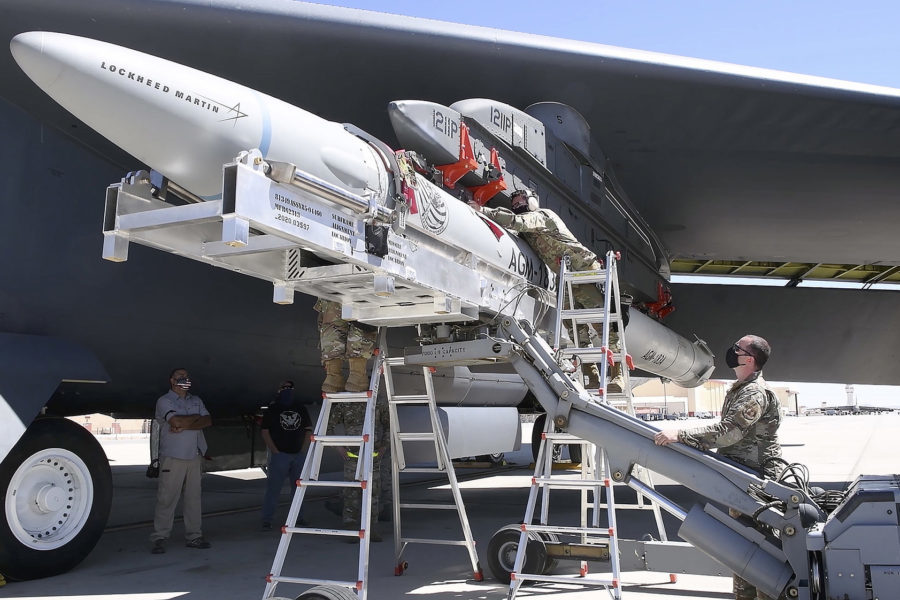The Air Force should work closely with the Army, Navy, and Defense Department to identify best practices and share data as it looks to get its hypersonic missile program back on track, according to the recommendations of a new Pentagon report released Jan. 27.
The AGM-183A Air-launched Rapid Response Weapon is intended to be the Air Force’s first hypersonic weapon, deployed in the early 2020s. But over the course of 2021, the weapon failed three booster flight tests, raising fears that the program could be delayed.
An issue with a fin actuator led to the failure of the first booster flight test for the Air Force’s hypersonic missile, while the service continues to investigate what caused a second failure, the DOD’s Office of the Director of Operational Test & Evaluation revealed in its annual report.
The DOT&E report didn’t recommend that the Air Force revise its schedule for the program, but it did detail the unexpected “hardware and software” problems that caused problems for ARRW at multiple stages of testing in fiscal 2021.
First, the report noted, during captive carry flight tests, two unexpected events occurred, “which required a redesign of the fin control system.”
Those events delayed the first flight of ARRW, which then-Air Force acquisition czar Will Roper had predicted would happen before the end of 2020. Sources later told Air Force Magazine that the failure was caused by “dumb mistakes;” one reported that a technician failed to follow a checklist and another reported an improperly fastened control surface.
Then, when the first booster flight test finally occurred in April, the weapon did not even leave the wing of the B-52 carrying it, as was widely reported at the time.
The DOT&E report states that the missile “by design, did not separate from the B-52 because the system determined there was a fin actuator problem.”
That issue was fixed before a second flight test in July, and the missile did safely separate from the aircraft.
At that point, however, “an unexpected test event after release from the B-52 aircraft … prevented the booster motor from igniting, leading to a loss of the test asset,” the report states.
The report did not give a cause for the second failure, saying the Air Force is “currently conducting a Failure Review Board to determine the root cause(s) of the failure and implement corrective actions to the missile system before the next booster test flight.” The second test did demonstrate that the fin actuator issue from the first test has been resolved.
However, while the report only covered fiscal 2021, the program endured another setback in December, when a third booster flight test failed—as in the first test, an issue during the launch sequence prevented the missile from ever leaving the B-52, according to an Air Force statement.
The DOT&E report did offer three recommendations for the Air Force regarding ARRW:
- Collaborate with the Office of the Secretary of Defense stakeholders and the Army and Navy hypersonic program offices to identify and leverage common best practices, test corridors and infrastructure, test data management and analyses, and modeling and simulation capability.
- Verify, validate, and accredit all modeling and simulation tools intended to enable an adequate assessment of ARRW performance.
- Conduct an adequate survivability assessment of ARRW in a cyber-contested environment.
The first recommendation comes at a point where the Army’s Long Range Hypersonic Weapon is set to fly “in the next year or two,” making it the Pentagon’s first hypersonic weapon, according to Gillian Bussey, director of DOD’s Joint Hypersonics Transition Office. The Navy’s Conventional Prompt Strike system, which uses the same glide body, should follow soon after.
Meanwhile, Air Force Brig. Gen. Heath A. Collins, program executive for weapons, said back in September that the ARRW program was still on pace to be in production by the end of 2022—if USAF was able to determine the cause of the second test failure and resume flight testing by the end of 2021.
